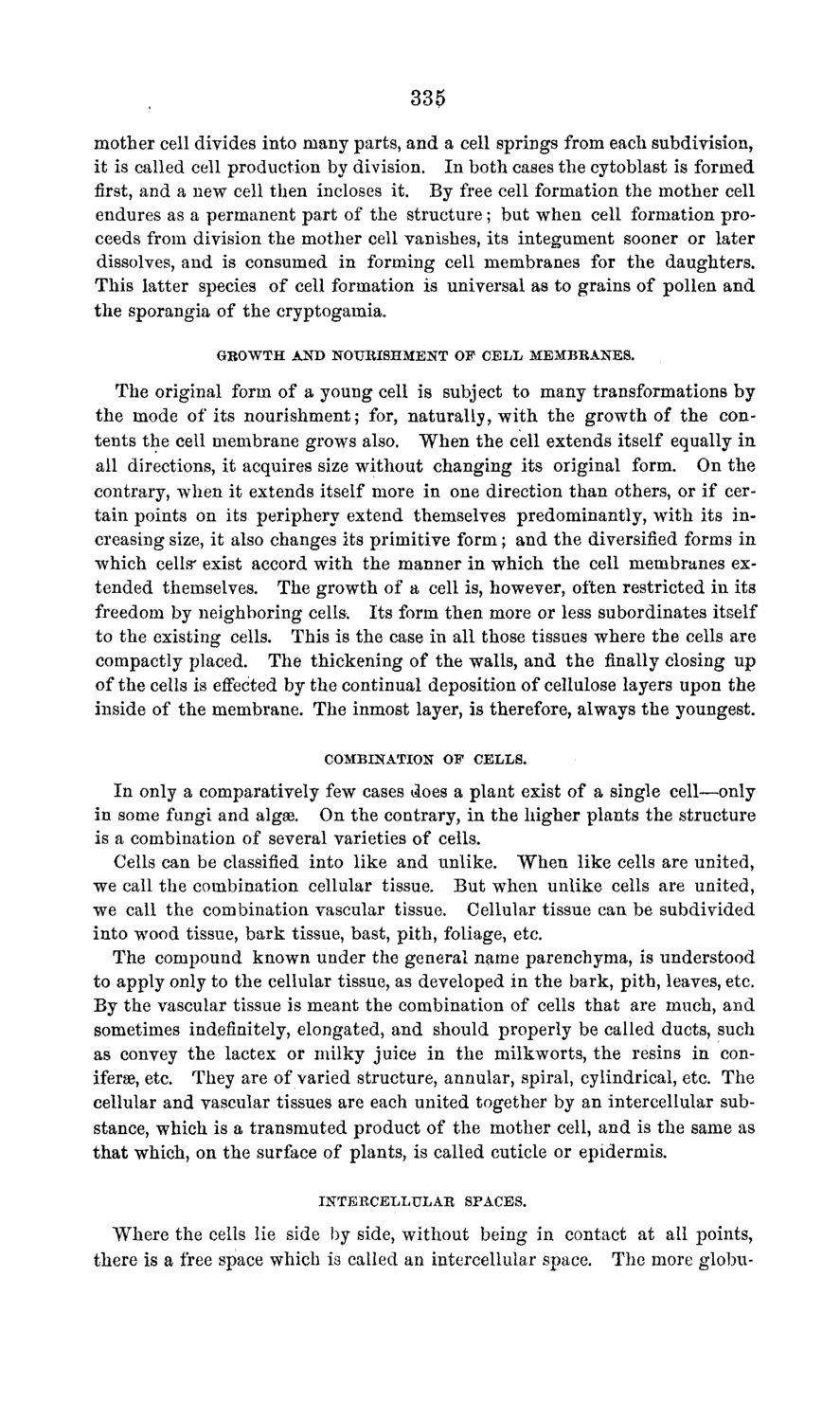| |
| |
Caption: Board of Trustees Minutes - 1869
This is a reduced-resolution page image for fast online browsing.

EXTRACTED TEXT FROM PAGE:
335 mother cell divides into many parts, and a cell springs from each subdivision, it is called cell production by division. In both cases the cytoblast is formed first, and a new cell then incloses it. By free cell formation the mother cell endures as a permanent part of the structure; but when cell formation proceeds from division the mother cell vanishes, its integument sooner or later dissolves, and is consumed in forming cell membranes for the daughters. This latter species of cell formation is universal as to grains of pollen and the sporangia of the cryptogamia. G R O W T H AND N O U R I S H M E N T O F C E L L M E M B R A N E S . The original form of a young cell is subject to many transformations by the mode of its nourishment; for, naturally, with the growth of the contents the cell membrane grows also. When the cell extends itself equally in all directions, it acquires size without changing its original form. On the contrary, when it extends itself more in one direction than others, or if certain points on its periphery extend themselves predominantly, with its increasing size, it also changes its primitive form; and the diversified forms in which cells' exist accord with the manner in which the cell membranes extended themselves. The growth of a cell is, however, often restricted in its freedom by neighboring cells. Its form then more or less subordinates itself to the existing cells. This is the case in all those tissues where the cells are compactly placed. The thickening of the walls, and the finally closing up of the cells is effected by the continual deposition of cellulose layers upon the inside of the membrane. The inmost layer, is therefore, always the youngest. COMBINATION O F C E L L S . In only a comparatively few cases does a plant exist of a single cell—only in some fungi and algae. On the contrary, in the higher plants the structure is a combination of several varieties of cells. Cells can be classified into like and unlike. "When like cells are united, we call the combination cellular tissue. But when unlike cells are united, we call the combination vascular tissue. Cellular tissue can be subdivided into wood tissue, bark tissue, bast, pith, foliage, etc. The compound known under the general name parenchyma, is understood to apply only to the cellular tissue, as developed in the bark, pith, leaves, etc. By the vascular tissue is meant the combination of cells that are much, and sometimes indefinitely, elongated, and should properly be called ducts, such as convey the lactex or milky juice in the milkworts, the resins in coniferse, etc. They are of varied structure, annular, spiral, cylindrical, etc. The cellular and vascular tissues are each united together by an intercellular substance, which is a transmuted product of the mother cell, and is the same as that which, on the surface of plants, is called cuticle or epidermis. INTERCELLULAR SPACES. Where the cells lie side by side, without being in contact at all j>oints, there is a free space which is called an intercellular space. The more globu-
| |